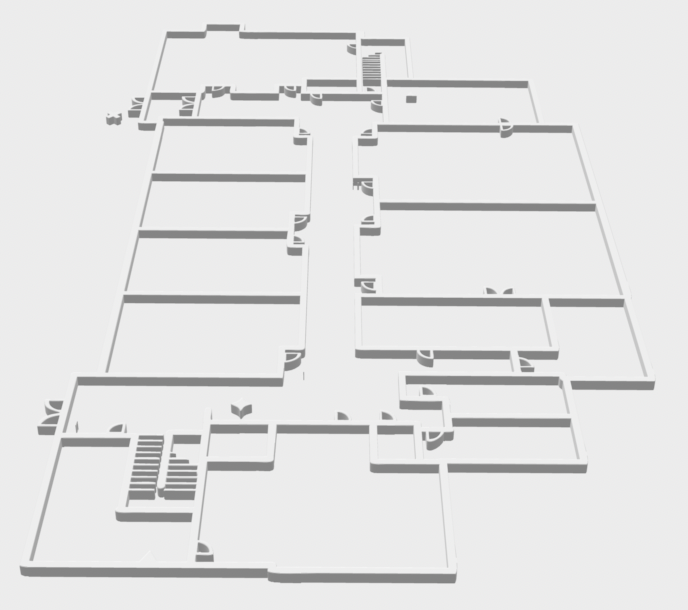VI Accessibility
This page serves as a reference for making schools and other public spaces accessible to people who have visual impairments including blindness, low vision, and Cortical Visual Impairment.
*Note that Washtenaw ISD does not specifically endorse any of the vendors linked below. The links are for informational purposes only.
Signage
Generally speaking, signage should be clear, high contrast, uncluttered and placed at eye-level and within reach by everyone. Room numbers should be accompanied by a room title when possible and grade 2 braille should exactly match the print.
- Specific ADA requirements for signage can be found here: ADA Signage Requirements
Room Signs / Numbers
- Room numbers should follow a logical format (floor 1 are 100-level and increase along the length of a hallway; even on one side and odd on the other).
- Provide clear signage in large, high contrast, raised type.
- Grade 2 braille should exactly match the print.
- See ADA Signage Requirements for more specifics on dimensions and placement specifications.
- Room Signs Example*
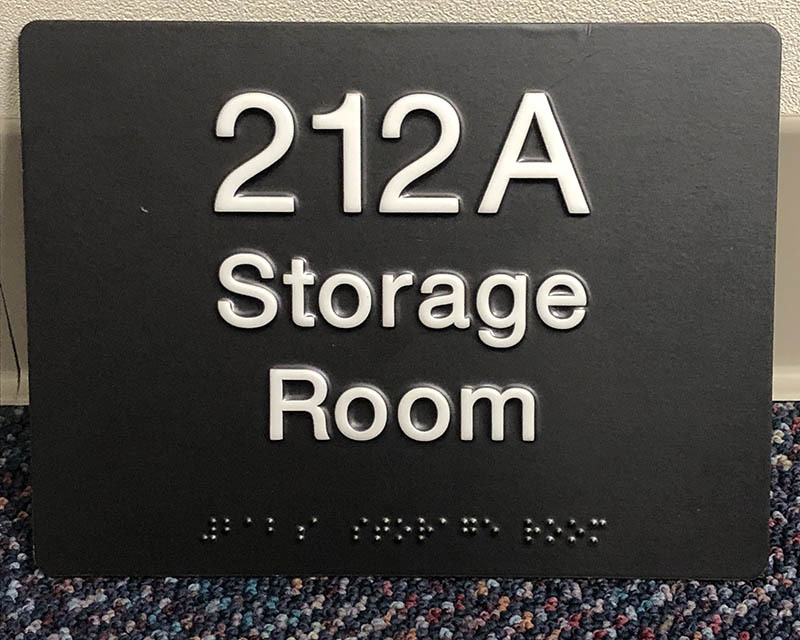
Informational Signage
- Provide clear signage in large, high contrast type.
- Keep the location consistent and as close to eye level as possible.
- Use braille on signs when possible.
Fire alarm cover
- Fire alarms should be covered to prevent inadvertent activation.
- Label with braille and large print.
- Example fire alarm cover link*
Adding Contrast
Tile Stairs
- Stair treads (stick on the top of the step) one on the top step and bottom step of each stair section.
- Also mark the beginnings / ends of railings to draw visual attention to them.
- High Contrast Tile Stair Example Link*
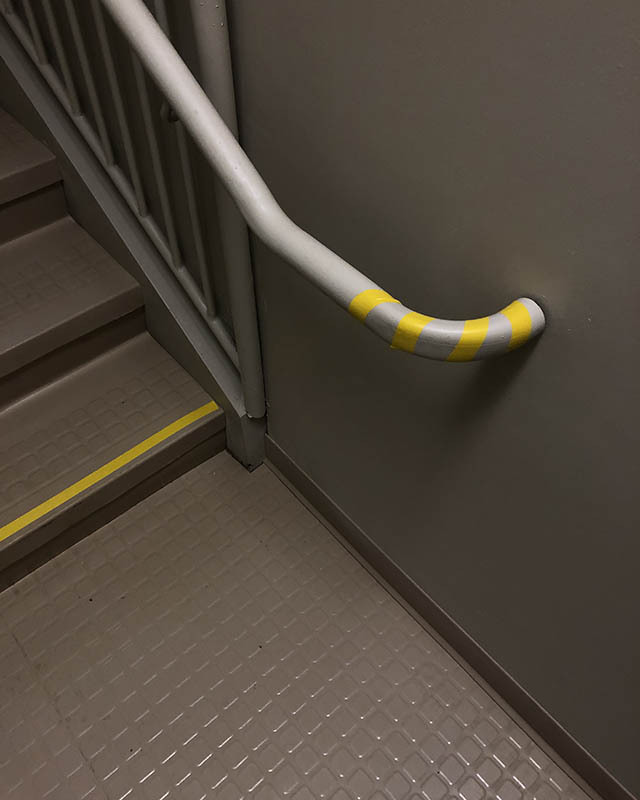
Carpet Stairs
- Stair tread nosing for carpet, one on top and bottom of each set of stairs section.
- Carpet Stairs High Contrast Example Link*
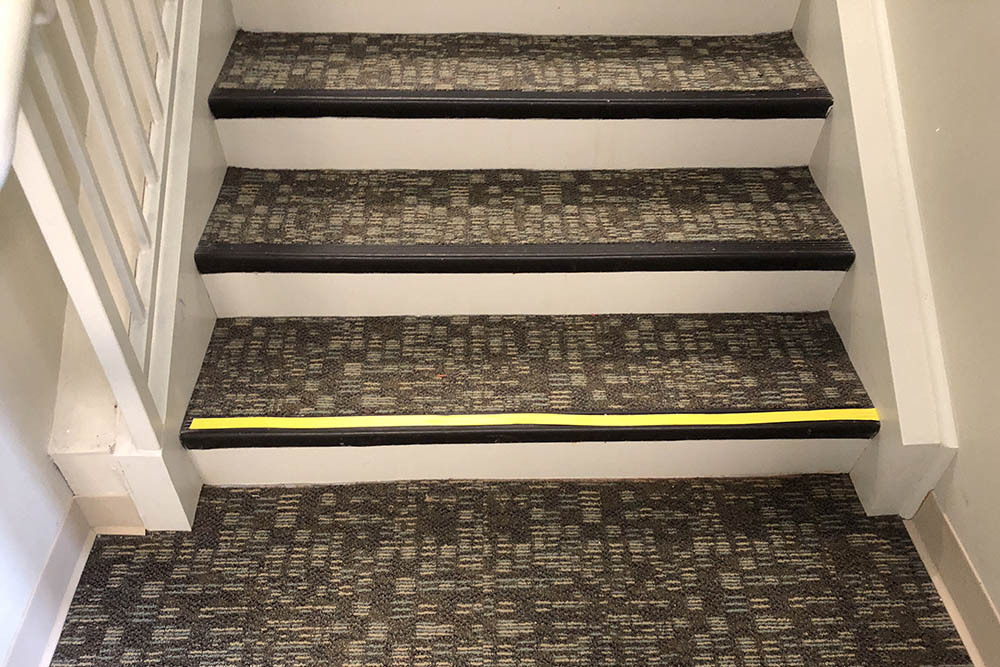
Paint curbs yellow and outside steps
(paint on the top of the step)
- Curbs near entrances or other high-traffic areas should be painted yellow to highlight a sudden level change.
Film Coverings for Windows
- Large windows in the middle of rooms or near doors need to be labeled as they can appear to be invisible otherwise.
- High Contrast Window Cling Example*
Door Mullion Highlighting
- Door dividers (mullions) should be labeled with high-contrast tape or ribbon.
- High Contrast Door Mullion Tape*
Appliances and Workspaces
Labeling Appliances / Workspaces
- Appliances and other devices in schools and workspaces are often inaccessible as-is and may require braille and/or large-print labels.
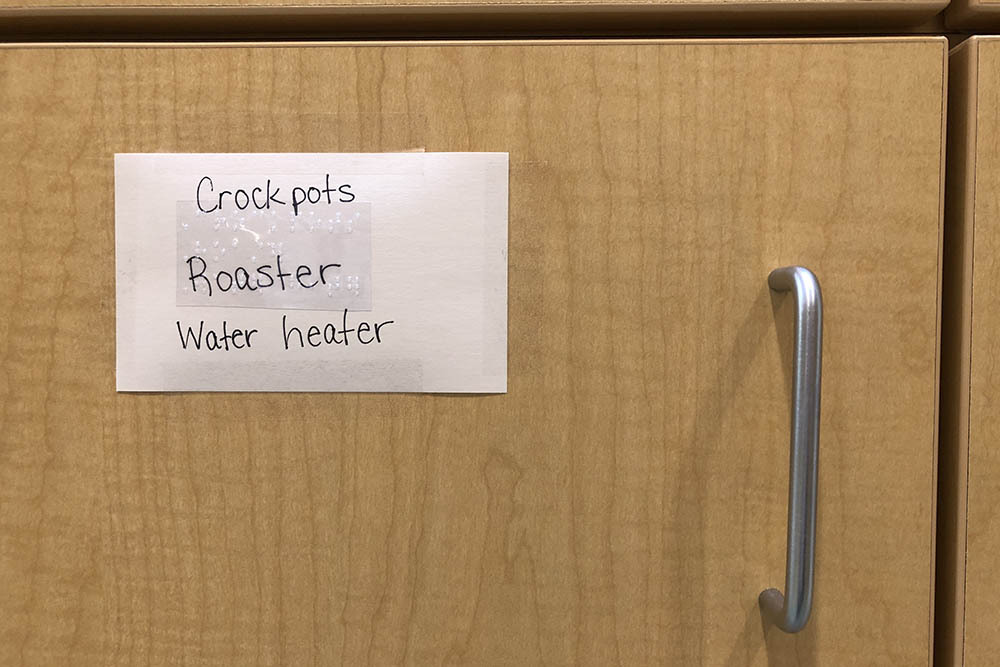
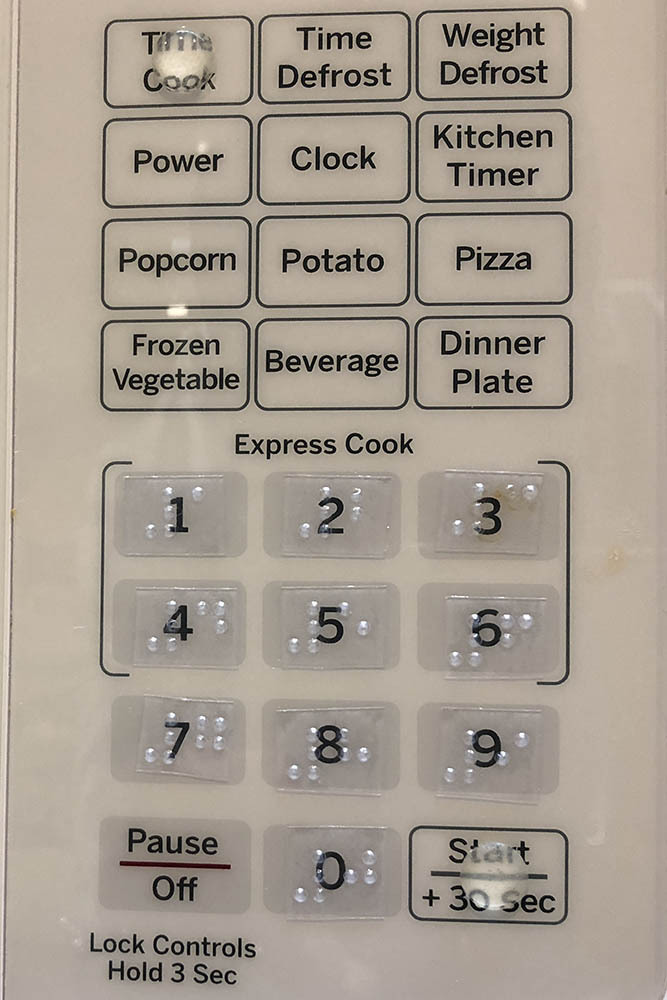
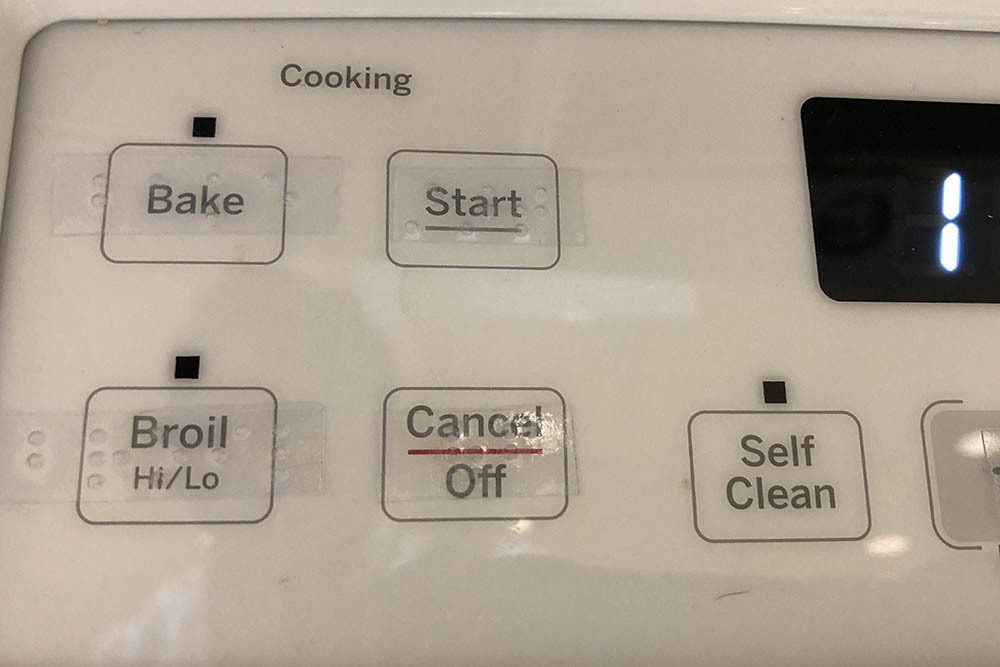
Cortical Visual Impairment
Cortical Visual Impairment (CVI) is an impairment which relates to how affected people perceive and process visual information. Simple modifications can work for many people affected by CVI.
- Add bright, high contrast labels to things such as coat hooks, lockers, and stairs.
- Reduce the visual business of work areas
- CVI Resource Link*
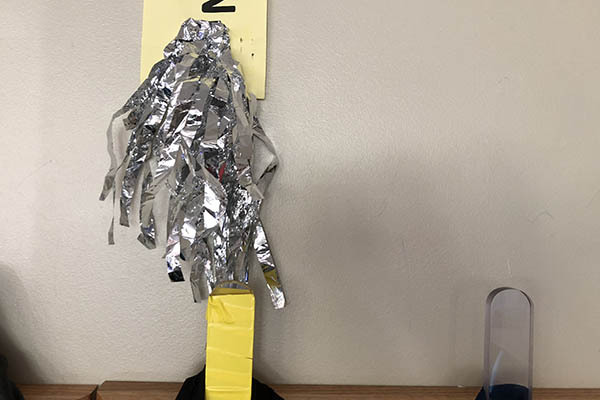
Floor Maps
Best practice is to provide a tactile version of floor maps for wayfinding and emergency use.
- 3D Printing from blueprints can be done by professional companies or savvy teachers and students.
- Low-tech versions can be made by anyone using crafting materials.
- Label everything clearly in braille and large print. Use a key to explain symbols.
